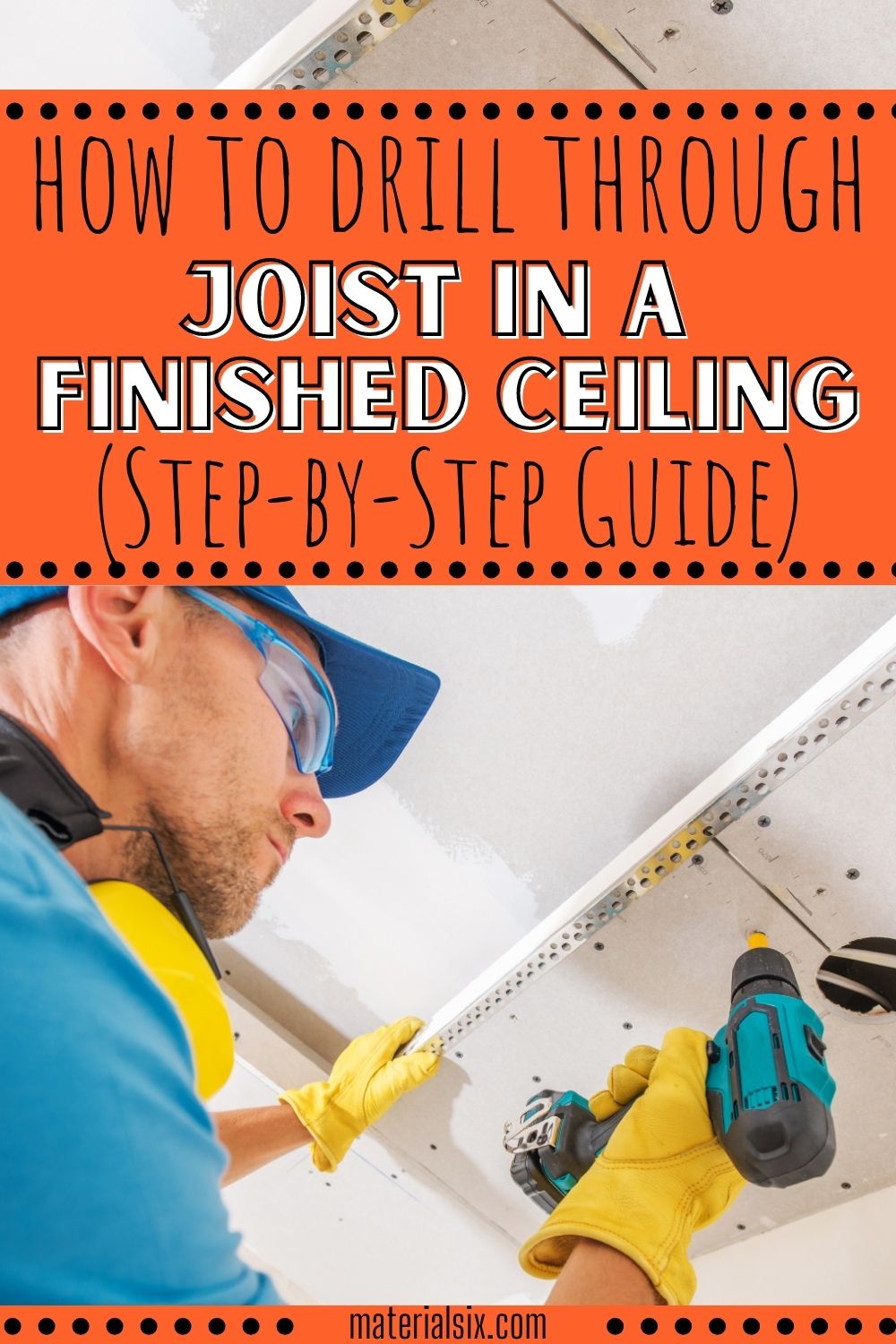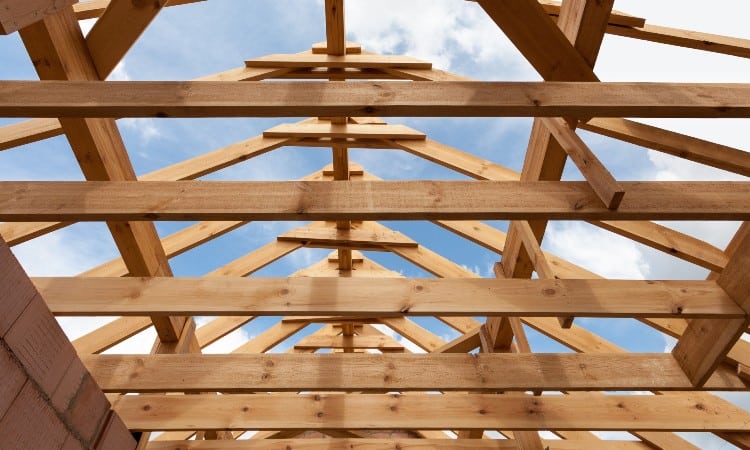Do you Want to drill through joists to hang something, or does electrical or plumbing run on the finished ceiling, and are you worried about how to do that? Well, you are in the right place. I am going to present a step-by-step guide about drilling through the Joists behind the ceiling. Hanging your decorative essentials in the room through Drilling joists will enhance the grace of your room.
First of all, determine the directions of the joists. Then use a ladder to access the ceiling and the stud finder on your ceiling to locate the joists behind the ceiling. Mark the edges of the Joist and find the center of the Joist. Use a drill machine to drill in the center of the Joist and insert the screw or molly bolt into the drilled hole.
If you don’t know anything about drilling through the joists behind the ceiling? No need to be worried. Here is a step-by-step guide for you. Just follow exactly, which will lead you to drill through the joists.

Things you will need to drill through Joists
- Ladder
- Stud Finder
- Marker
- Drill machine
How to Drill through Joists? Step-by-Step Guide
So, it’s time for work. I will describe simple steps to drill through Joists you have to follow exactly.
Step #1: Determine the direction and spacing of the joists
First, you need to know about the structural integrity of your house. You need to determine the direction and spacing of the joists inside the ceiling. The Joist could be parallel or perpendicular to the room’s door. They could also be a combination of both if there is a hipped roof. You can get an idea about the direction of the joists by looking outside of your home. You should also check the crawl space to ensure the joists’ direction and spacing.
The spacing between the joists could be 12, 16, or 24 inches.
Step #2: Use the stud Finder
Once you got an idea about the direction and spacing of the joists, now you should use the stud finder to locate the joists. You should know in detail how your stud finder works because some stud finders are designed to locate only the edge of the Joist, not the center. Watch this video to get the instructions:
Step #3: Find the center of the Joist using a stud finder.
Finding the center of the Joist is the most complicated part. Access the ceiling using the ladder and start using the stud finder. Use the stud finder multiple times in the same place.
Move it from outside the joists towards the middle of the Joist. Make a mark each time the stud finder indicates the center of the Joist. Then do the same thing from the other side. Usually, five to ten marks are enough. This will create multiple marks that are near the center of the Joist.
Now, make a larger mark in the middle of all those marks, and that’s where you drill.
Step #4: Start Drilling.
When drilling, use both hands so that the drill goes straight up. Make sure you hit the center of the Joist when you drill in, not the edge of the Joist. If you drill on the edge, the grip of the bolt will not be tightened, and it can cause damage to the structure or even injury.
Step #5: Inserting the bolt
Insert the screw into the drilled hole. Whether you insert the ceiling screw or molly bolt, use the screwdriver to insert, not the hammer.
Is it OK to drill through ceiling joists?
It’s safe to drill through joists, but you should consider the following:
- Make sure that the location of the joists is clear from any existing load-bearing walls.
- Use a drill bit as large as possible so that it can pass through both layers of joists without damaging them.
- If you’re using a hammer and chisel, try to use one with a wooden handle to minimize the chance of catching your finger in the hole.
Where should you not drill holes in joists?
Don’t drill through the top or bottom corner of your joists.
This is because the top and bottom of a joist are called flange points and should be treated with extra caution. Drilling through these areas can result in dangerous situations where the Joist could split or collapse.
If you have a hole drilled through the top or bottom corner of your joists, it can also weaken the structure of your home by allowing moisture to seep in from the wood and cause rot.
How big a hole Can I drill in a joist?
So, you have a joist in your basement and want to know how big a hole you can drill in it.
The answer is: that the hole should not be larger than half of the Joist. If your Joist is just temporary, then go ahead and use a jig saw or a reciprocating saw to cut out the hole. If it’s part of the permanent fixtures, then make sure that you’re using the right size of bit for the wood and that there’s not any kind of burr or rough edge on the drill bit itself.
If you are drilling a big hole with a drill, ensure that your drill is equipped with variable speed control and/or anti-vibration technology like a roller bearing or magnetic clutch. These tools help reduce vibrations and keep your wood stable enough to drill at high speeds without causing damage to your structure.
Does screwing into a joist weaken it?

The answer to this question is a little complicated, so that I will break it down for you. First, it’s important to note that screwing into a joist does not weaken it, but only when you follow the precautions or steps mentioned above.
If you dig a bigger hole than half the size of your Joist, it can also weaken the Joist.
But what if you don’t dig a hole? What if you drive screws into the wood and leave them there?
Well, that’s where things get complicated because there isn’t any way to know whether or not your screws will weaken your joists.
But remember, never screw a Joist on the corner area because it will surely weaken the Joist.
Conclusion
So, this is the guide you can follow to drill through Joists in a finished ceiling. The above-given steps will be very helpful for you to dig a hole with the help of a drill machine in the Joists. But before starting drilling, you should remember not to drill the corner area of the Joists.
More from Materialsix.com:

